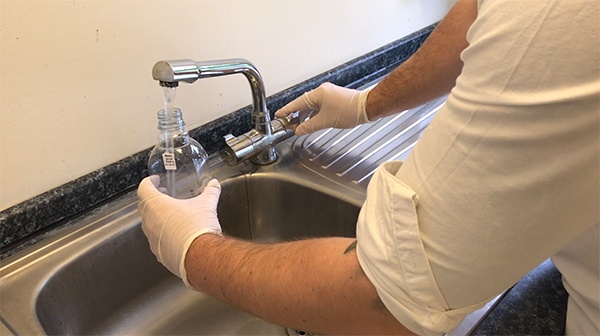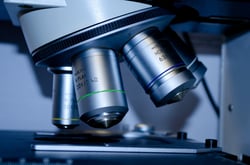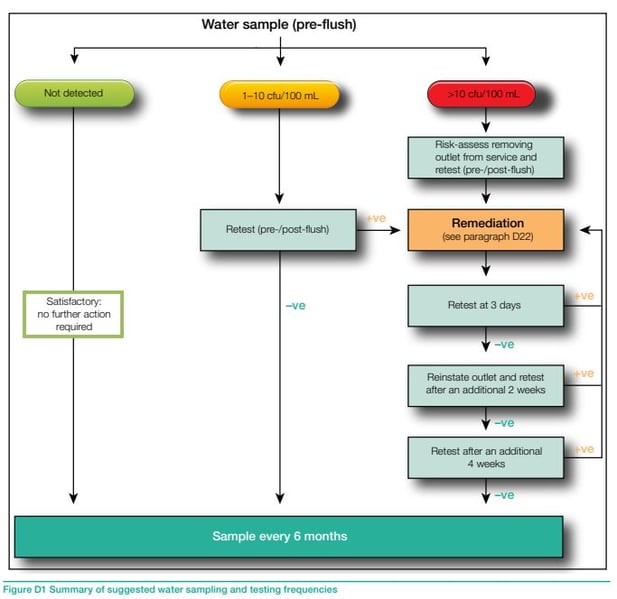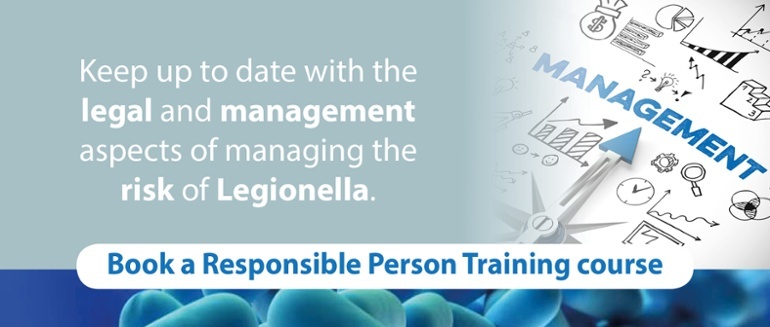
When should you sample or not is a question often raised in discussions and one that has some clearly defined parameters that should be followed at all times. What are you looking to achieve from sampling, is this part of a routine sampling plan or as a result of some non-conformance or investigation?
By following approved methodologies and strategies, Legionella sampling is an important tool in managing water hygiene safety. There are typically three main areas of sampling within most water systems:
- Legionella Sampling;
- Sampling for Microbiological activity (Total Viable Count or TVC);
- Sampling for Pseudomonas aeruginosa (in augmented care).
Sampling for Legionella
Prior to undertaking any sampling, a sampling plan should be established and there is guidance on this within HTM04-01 Part B Paragraph 10.2.
This clearly states that as a minimum, samples should be taken as follows:
- From the cold water storage and the furthermost outlet from the tank;
- From the calorifier flow, or the closest tap to the calorifier, and the furthermost tap on the hot water service circulating system;
- Additional samples should be taken from the base of the calorifier where drain valves have been fitted;
- Additional random pre- and post-flush samples may also be considered appropriate where systems are known to be susceptible to colonisation in line with BS 7592 guidance;
- Methods for sampling should be in accordance with BS 7592 guidance.
This forms the main basis of the legionella sampling plan, however, there should also be provision for additional sampling in areas where control strategies are shown not to be working correctly, such as poor temperature control, or where samples taken returned positive results. These will vary by areas defined as high risk or not and these are shown within HTM04-01 Part B Paragraph 10.4 and subsequent figures 4 and 5.
Sampling for Microbiological Activity
 Routine microbiological sampling for instance is not recommended within HTM04-01 and paragraph 9.1 states that sampling for TVCs is not recommended as there is no direct association with TVCs and the presence of waterborne pathogens; however, if they are taken then they should be used to analyse trends and taken before and after disinfection of a system. Samples should be taken at least 48 hours post-disinfection to give an indication of the effectiveness of the procedure.
Routine microbiological sampling for instance is not recommended within HTM04-01 and paragraph 9.1 states that sampling for TVCs is not recommended as there is no direct association with TVCs and the presence of waterborne pathogens; however, if they are taken then they should be used to analyse trends and taken before and after disinfection of a system. Samples should be taken at least 48 hours post-disinfection to give an indication of the effectiveness of the procedure.
It is however recommended to take microbiological samples for TVC where there are taste or odour problems as these can be a good indicator of contamination.
Sampling for Pseudomonas aeruginosa (in augmented care)
Sampling for P. aeruginosa should also follow a detailed sampling plan agreed by the Water Safety Group (WSG) and the outlets selected by the Infection Control Team as being segmented care and having the following criteria:
- has direct contact with patients;
- is used to wash staff hands; or
- is used to fill or clean equipment that will have contact with patients as determined by the risk assessment.
These outlets once identified should be sampled to provide an assessment of contamination and can be over a determined timeframe. To maximise the effectiveness of sampling, the samples should be taken pre-flush during a period of low use; or no use of at least two hours.
If these results are satisfactory then there is no requirement to repeat sampling for a period of six months (HTM04-01 Part B Paragraph D.14). However, the role of the Water Safety Group is to determine if this is sufficient in each instance and may determine that further sampling is required; particularly if there is clinical evidence of changes on water distribution, components or refurbishments that have been undertaken.
Figure D1 in HTM04-01 Part B shows the requirements following sample results pre-flush and should form part of the water sampling plan.

Where these positive results are obtained then pre- and post-flush samples should be taken to help localise the source of contamination.
Where Else to Sample
There are additional areas that require routine sampling, and these include but are not limited to the following:
- Private Water Supplies (well water or Borehole water) – physical, chemical and biological parameters in accordance with The Private Water Supplies Regulations 2009;
- Endoscope Reprocessing Units – TVC, aeruginosa, Environmental mycobacteria;
- Renal Units – TVC, Endotoxin see BS 13959, BS 11663, BS 13958 and HBN 07-01 and 07-02;
- Hydrotherapy Pools – TVC, Coliforms, E. coli, aeruginosa;
- Sterile Services – TVC, Endotoxins see HTM01-01;
- Laundries – TVC (Bioburden) see HTM01-04;
- Dental Facilities – Legionella, aeruginosa see HTM01-05.
Conclusion
Sampling should be used as a tool to provide suitable and valuable information on the effectiveness of the control schemes in place and can only be assured if the sampling plan has been properly formulated and enacted. Random ‘fishing’ is certainly not recommended and there should always be a clear reason or rationale behind any sampling undertaken.
Feel free to reach out if you have any questions about the issues mentioned above or if you would like to consult with one of our experts on water hygiene.
Editor’s Note: The information provided in this blog is correct at date of original publication – June 2021
© Water Hygiene Centre 2021








